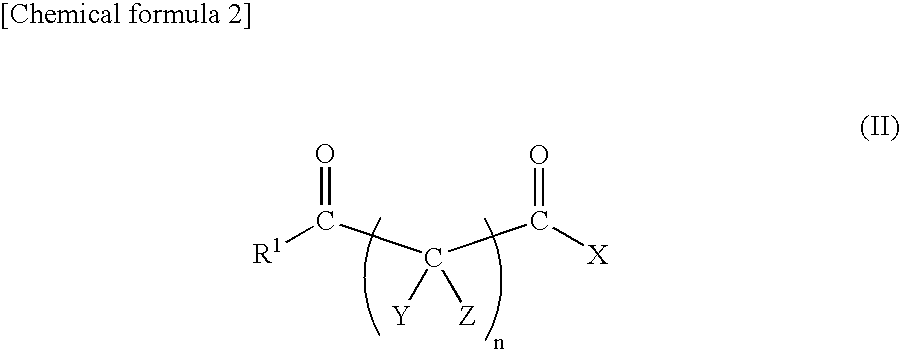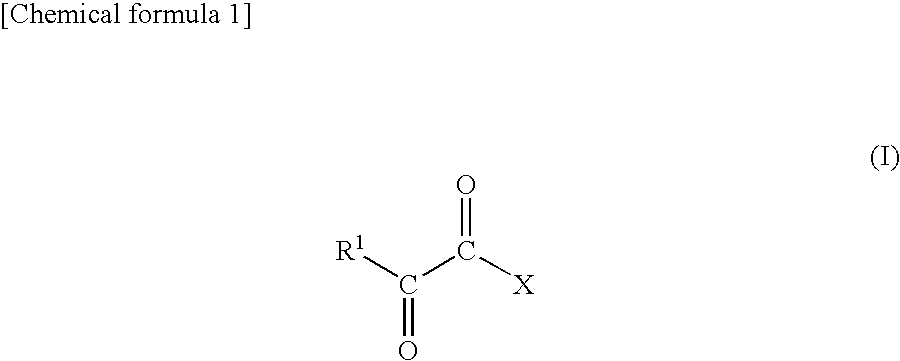Nonaqueous Electrolyte Solution and Lithium Secondary Battery Using Same
- Summary
- Abstract
- Description
- Claims
- Application Information
AI Technical Summary
Benefits of technology
Problems solved by technology
Method used
Image
Examples
example 1
[Preparation of the Nonaqueous Electrolytic Solution]
[0118]A nonaqueous solvent in which ethylene carbonate (EC):methyl ethyl carbonate (MEC) (volume ratio)=30:70 was prepared. LiPF6 was dissolved in this solvent as an electrolyte salt in a concentration of 1 M to prepare a nonaqueous electrolytic solution. Methyl pyruvate was then added to the solution as an additive in an amount of 1% by weight of the nonaqueous electrolytic solution.
[Production of Cylindrical Lithium Secondary Battery and Measurement of Battery Characteristics]
[0119]An 18650 size cylindrical battery (diameter: 18 mm, height: 65 mm) was produced by using a separator of a polyethylene microporous film (thickness: 20 μm), pouring the above-mentioned nonaqueous electrolytic solution into the battery, and then introducing air having a dew point of −60° C. into the battery before the battery was sealed. The battery was provided with a pressure release vent and an internal current breaker (PTC element). At this time, th...
example 2
[0123]A cylindrical battery was produced and its battery characteristics were determined in a manner similar to Example 1 except that a nonaqueous solvent of propylene carbonate (PC):dimethyl carbonate (DMC) (volume ratio)=1:2 was prepared, and LiPF6 was dissolved in this solvent as an electrolyte salt in a concentration of 1 M to prepare a nonaqueous electrolytic solution, and then 2-propynyl pyruvate was used as an additive in an amount of 1% by weight of the nonaqueous electrolytic solution. The results are shown in Table 1.
example 3
[0125]A cylindrical battery was produced and its battery characteristics were determined in a manner similar to Example 1 except that a nonaqueous solvent of ethylene carbonate (EC):vinylene carbonate (VC):methyl ethyl carbonate (MEC) (volume ratio)=30:2:68 was prepared, LiPF6 was dissolved in this solvent as an electrolyte salt in a concentration of 1 M to prepare a nonaqueous electrolytic solution, and then ethyl pyruvate was used as an additive in an amount of 1% by weight of the nonaqueous electrolytic solution. The results are shown in Table 1.
PUM
 Login to View More
Login to View More Abstract
Description
Claims
Application Information
 Login to View More
Login to View More - R&D
- Intellectual Property
- Life Sciences
- Materials
- Tech Scout
- Unparalleled Data Quality
- Higher Quality Content
- 60% Fewer Hallucinations
Browse by: Latest US Patents, China's latest patents, Technical Efficacy Thesaurus, Application Domain, Technology Topic, Popular Technical Reports.
© 2025 PatSnap. All rights reserved.Legal|Privacy policy|Modern Slavery Act Transparency Statement|Sitemap|About US| Contact US: help@patsnap.com



